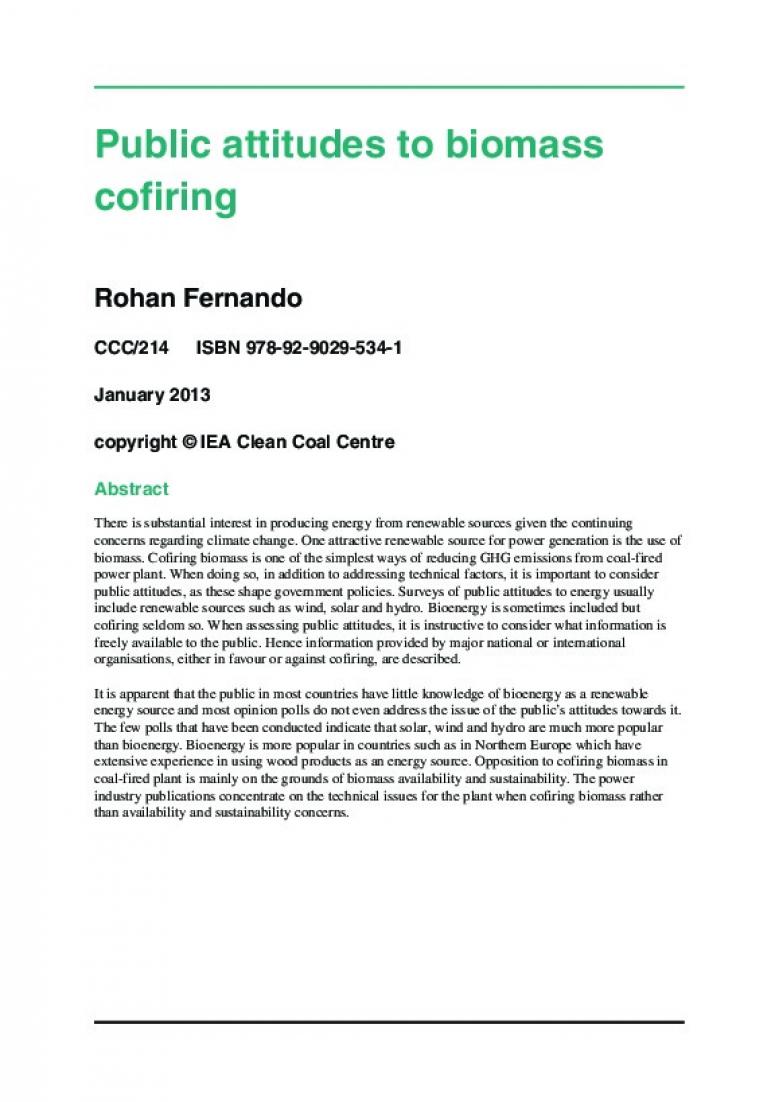CCC/214 ISBN 978-92-9029-534-1
January 2013
copyright © IEA Clean Coal Centre
Abstract
There is substantial interest in producing energy from renewable sources given the continuing
concerns regarding climate change. One attractive renewable source for power generation is the use of
biomass. Cofiring biomass is one of the simplest ways of reducing GHG emissions from coal-fired
power plant. When doing so, in addition to addressing technical factors, it is important to consider
public attitudes, as these shape government policies. Surveys of public attitudes to energy usually
include renewable sources such as wind, solar and hydro. Bioenergy is sometimes included but
cofiring seldom so. When assessing public attitudes, it is instructive to consider what information is
freely available to the public. Hence information provided by major national or international
organisations, either in favour or against cofiring, are described.
It is apparent that the public in most countries have little knowledge of bioenergy as a renewable
energy source and most opinion polls do not even address the issue of the public’s attitudes towards it.
The few polls that have been conducted indicate that solar, wind and hydro are much more popular
than bioenergy. Bioenergy is more popular in countries such as in Northern Europe which have
extensive experience in using wood products as an energy source. Opposition to cofiring biomass in
coal-fired plant is mainly on the grounds of biomass availability and sustainability. The power
industry publications concentrate on the technical issues for the plant when cofiring biomass rather
than availability and sustainability concerns.
| Attachment | Size |
|---|---|
| 745.52 KB |


